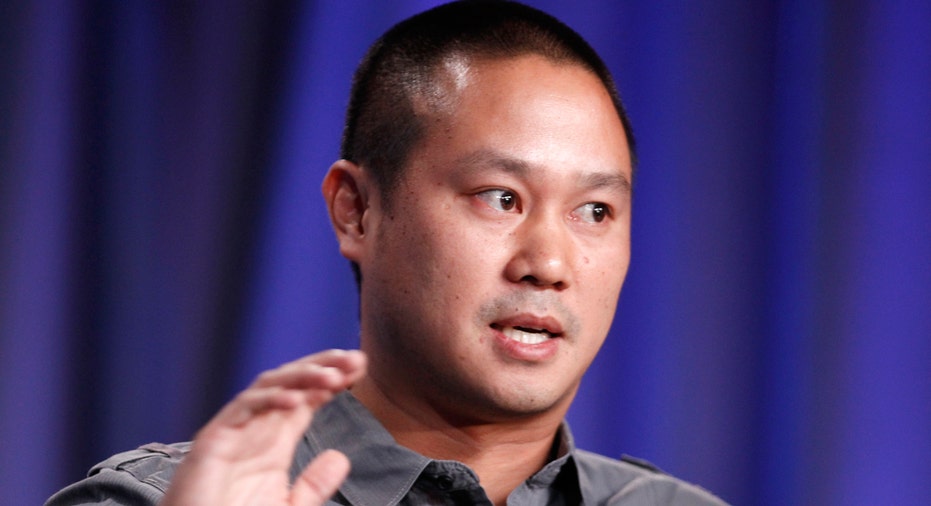Zappos: A Wacky Work Experiment Gone Wrong

After reading Roger D. Hodge’s 9,000-word New Republic piece about CEO Tony Hsieh’s radical workplace experiment at Zappos, I couldn’t be more depressed. I simply can’t believe that somewhere in the neighborhood of 1,500 employees are being coerced into going through all this narcissistic nonsense just to keep their jobs.
In case you missed it, Hsieh decided in 2013 that the online retailer’s culture just wasn’t weird enough anymore, so he began a transition to a controversial new organizational system with no managers or titles known as Holacracy.
After two years he shifted to a “rip off the band-aid” approach and gave employees a choice: you’re either “all in” with Holacracy or you’re “all out” at Zappos. After the April 30 deadline, 210 employees or about 14% of the company chose the “all out” option.
Nearly six months later, Zappos appears to be in a perpetual state of confusion as employees, or whatever they’re called (top execs are referred to as monkeys – I don’t want to know what they call employees), try to figure out how to make decisions and get their work done.
Most importantly, they’re all desperately trying to understand how they’re going to make ends meet under a nebulous new compensation policy that Hodge describes as “a labyrinthine process that has defeated my most strenuous attempts at comprehension.”
As one employee put it, “At Zappos, the traditional HR concept of a career path is out the window. We’re being encouraged to think in terms of a choose-your-own-career adventure.” That appears to have something to do with strange Holacracy constructs called “people points,” and “badges,” which Hodge likens to merit badges in scouting.
Here’s what I don’t get. How can a system be billed as a self-governing and non-hierarchical democratized version of the corporation when, in practice, it’s actually the most rigid, tedious, bureaucratic, and ironically, hierarchical, management structure imaginable.
It’s as if a software engineer with delusions of grandeur decided to write a hundred thousand lines of code to describe his own personal vision of how a company should operate – complete with its own extraordinarily complex language, constitution, rules for everything you can think of, and library of developer kits, apps and APIs.
It even has a cloud-based tool called GlassFrog that governs how everything should be done – from projects and meetings to authority and decision-making – right down to the minutiae of checklists, metrics, boundaries, and roles and responsibilities. I don’t care what you call it or how you spin it, that sounds like a bureaucratic nightmare.
At this point I should probably add that Holacracy is trademarked, owned and sold by Holacracy One, which charges companies well up into the mid-six figure range to implement the system. The LLC was cofounded by Brian Robertson, a 35-year-old self-taught programmer who ran a little IT business before deciding that companies should evolve as organisms do in nature.
The great irony is that Robertson was trying to solve a problem that doesn’t exist. Look at it this way. The only mandate of a corporate structure is that there be some sort of governance or oversight like a board of directors. After that, it’s pretty much up to the company’s leadership to determine how it should be organized and run.
And while the corporate world has steadily evolved to leaner, flatter structures since the 80s, there are limits to how effectively a company can scale without having at least some modicum of organizational structure.
Take Apple (NASDAQ:AAPL), for example. Enormous as it is, the Silicon Valley tech giant is a relatively flat organization with few processes and minimal bureaucracy. But if you try to adapt Apple to a Holacracy type structure, I don’t care how you do it; I can tell you what the result would be. Disaster.
Look, humans didn’t evolve frontal lobes and invent countries, cities, and companies just to devolve those organizational structures back to a chaotic primordial soup and let it do its own thing. After all, the words “organic,” “organism” and “organization” all share the same root for a reason. But I think that escaped both Robertson and Hsieh.
Don’t get me wrong. Hsieh did a great job of growing Zappos to $1 billion before selling to Amazon(NASDAQ:AMZN) in 2009. But over the past few years, he appears fixated on reengineering everything from Zappos to downtown Las Vegas. For what purpose, I have no idea. But I do know that one man’s obsession is never a good reason to reorganize a company.
At this point, the experiment seems to be more about Hsieh than the company and its stakeholders, and that can’t be good. According to Hodge, “Unfortunately, right now it seems that most of the self-organizing and self-actualization at Zappos is being carried out by Hsieh. Everybody else is just following along.”



















